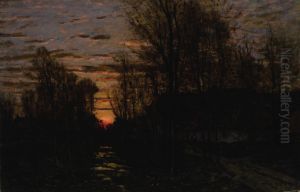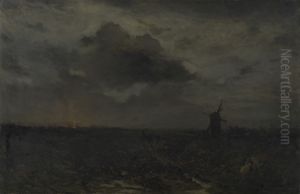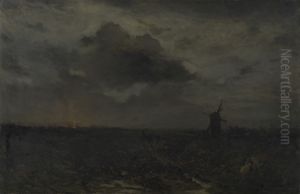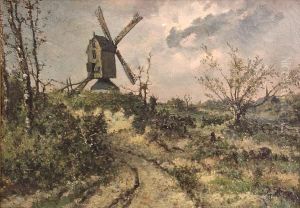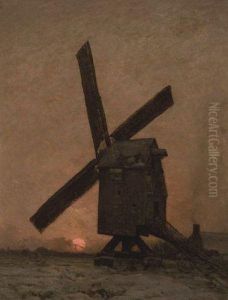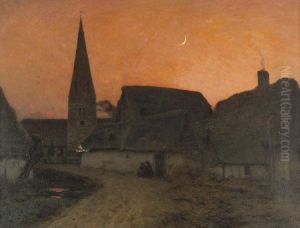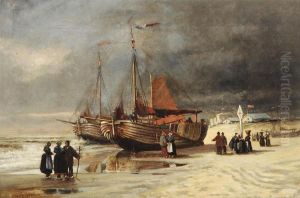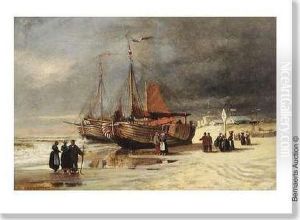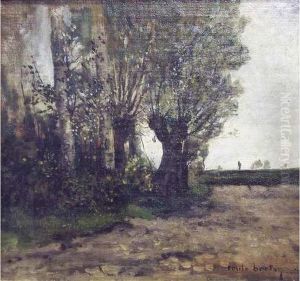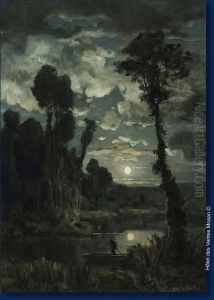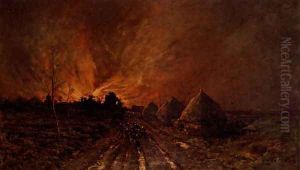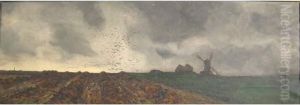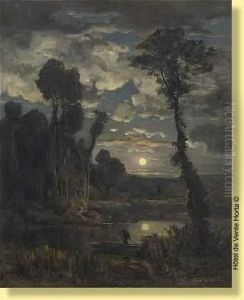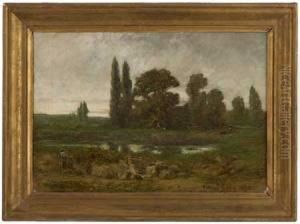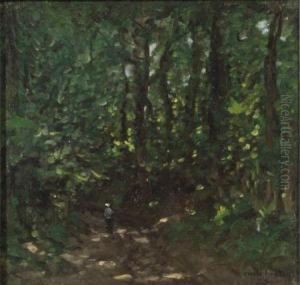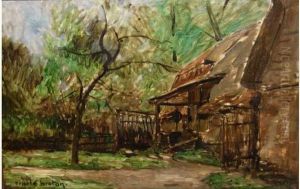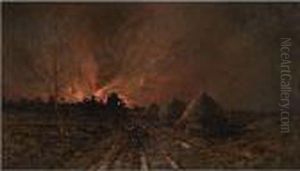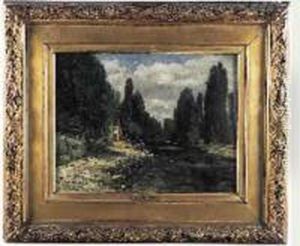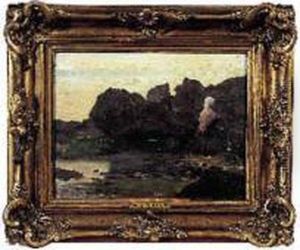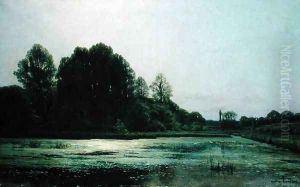Emile Adelard Breton Paintings
Émile Adelard Breton was born on April 5, 1831, in Courrières, a small village in the Pas-de-Calais region of France. He was the younger brother of the more famous French landscape painter Jules Breton. Unlike his brother, Émile Adelard Breton did not achieve widespread fame, and his life and work are less documented in the annals of art history, often overshadowed by Jules's successful career.
Despite the lack of extensive historical records, it is known that Émile Adelard Breton shared his family's artistic inclinations and was involved in the arts from a young age. He worked primarily as a landscape painter, capturing the serene and rustic landscapes of northern France. His style was influenced by the Barbizon school, a French art movement that emphasized realist and naturalist representations of rural life and scenery. The Barbizon painters sought to work outside in nature ('en plein air') long before the Impressionists popularized the approach.
Émile Adelard Breton's paintings are characterized by their attention to detail, the subtle play of light, and a gentle, earthy palette that reflects the quiet beauty of the French countryside. His works often conveyed a sense of tranquility and timelessness, evoking the harmonious rhythms of rural life. However, his artistic output was modest and his works were not as widely disseminated as those of his brother, resulting in a more limited impact on the art world.
He exhibited his work in Paris Salons, which were the official art exhibitions of the Académie des Beaux-Arts in Paris, but his presence in the art historical record is less pronounced than many of his contemporaries. Émile Adelard Breton passed away on May 5, 1902, in Courrières. His legacy is closely tied to that of his brother, Jules Breton, and he remains a relatively obscure figure within the rich tapestry of 19th-century French painting.
